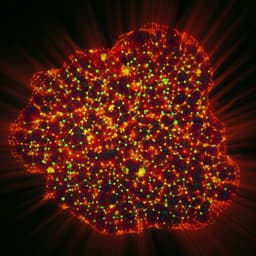
Physics
Small-world complex network generation on a digital quantum processor
E. B. Jones, L. E. Hillberry, et al.
Dive into the fascinating world of quantum cellular automata (QCA) where simple rules lead to complex physical phenomena. This groundbreaking research, conducted by Eric B. Jones and colleagues, reveals the formation of small-world mutual information networks in superconducting qubit systems. Discover the implications for simulating strongly-correlated matter and beyond-classical computations.
Playback language: English
Related Publications
Explore these studies to deepen your understanding of the subject.







